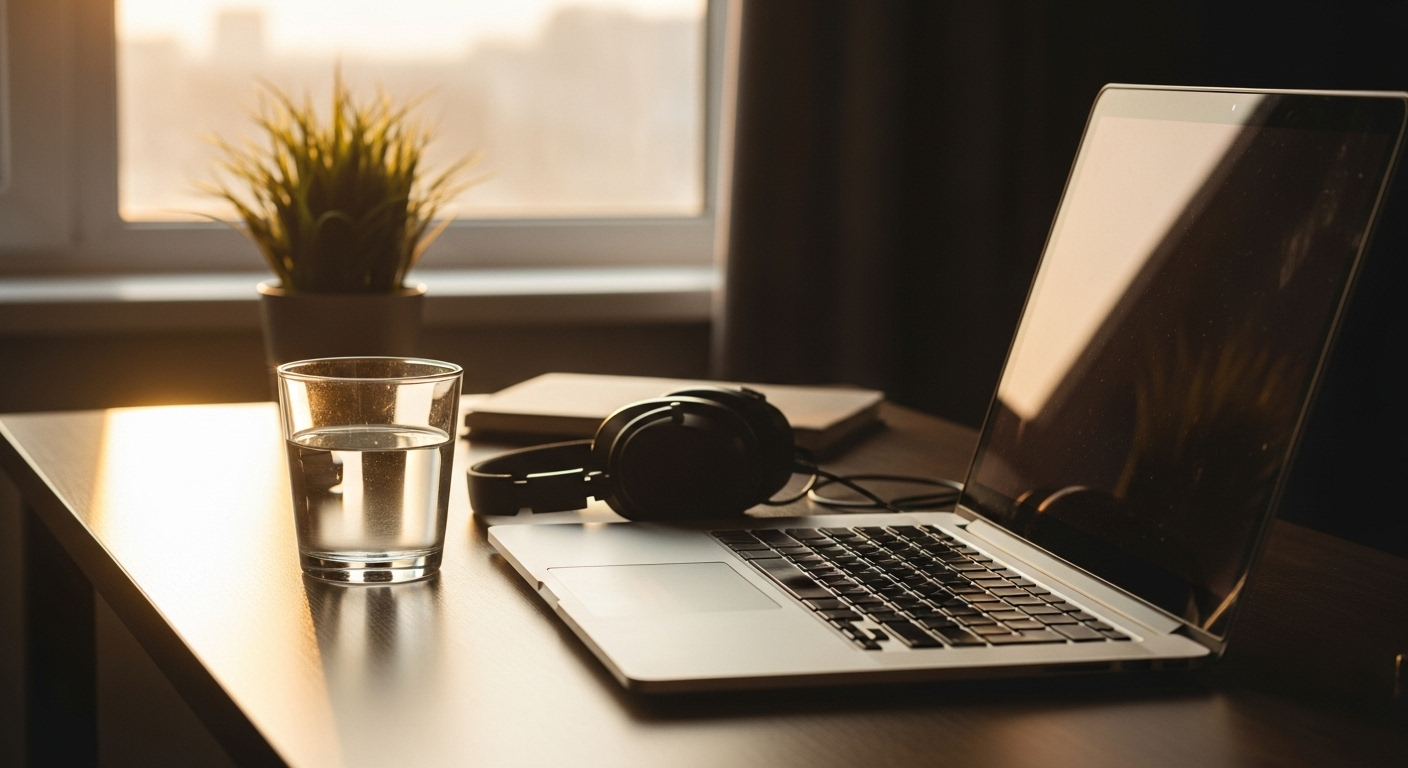
You know the email. The one from HR with the subject line “Wellness Wednesday!” It arrives on a Tuesday afternoon when you’re three deadlines deep and running on fumes and the dregs of your morning coffee. It cheerfully invites you to a lunchtime seminar on “mindful eating” while, ironically, the breakroom vending machine is being restocked with cheese puffs.
It’s a special kind of corporate whiplash, isn’t it? This whole culture that glorifies the 60-hour work week and then acts surprised when its entire workforce is burnt out, living on antacids, and considers a brisk walk to the coffee machine their cardio for the day.
Let’s be real. We all *want* to be healthier. But the standard advice feels like it was written for people who have personal chefs and an extra eight hours in the day. So this isn’t that. This is the un-wellness guide. This is the stuff that actually works when you’re just trying to not feel like a walking husk by Friday afternoon. I’ve lived that life, and this is what I’ve learned from the trenches.
Ditch the All-or-Nothing Insanity
Here’s the first mistake we all make. It’s January 1st, or a Monday, or our birthday, and we declare, “This is it! From now on, I’m going to the gym five days a week, meditating for 30 minutes, meal prepping every Sunday, and only drinking kale-infused water.”
And by Thursday, we’re face-down in a pizza because the sheer exhaustion of trying to be perfect is more stressful than our actual job. The secret isn’t a grand overhaul. It’s about embracing the “good enough” revolution. It’s about making changes so small, so stupidly simple, that it feels like you’re cheating. Because that’s how you build momentum.
Surviving the 9-to-5: Your Body Isn’t Made for a Desk
Our bodies were designed to hunt, gather, and run. Now, we use them to sit in a slightly-too-firm chair and stare at a glowing rectangle for nine hours. No wonder everything hurts. The key to staying active with a desk job isn’t a lunchtime CrossFit class (unless that’s your thing). It’s about micro-dosing movement throughout your day.
My game-changer was the “Two-Minute Rule.” Every time I finished a task—sent an email, got off a call, finished a slide—I stood up. That’s it. Sometimes I’d walk to the kitchen to refill my water bottle. Sometimes I’d just stretch my back. It breaks the hypnotic spell of the screen and reminds your body it still exists. Try it. Set a timer for 50 minutes. When it goes off, stand up for two minutes. It’s a tiny act of rebellion against the sedentary slump.
Frequently Asked Questions (FAQs)
How can I find time to exercise with a 10-hour workday?
You have to redefine “exercise.” It doesn’t have to be a one-hour gym session. It can be a 15-minute brisk walk during your lunch break. It can be taking the stairs instead of the elevator. It can be doing 10 minutes of bodyweight exercises (squats, push-ups) at home before you shower. Short bursts of activity are incredibly effective. Stop thinking in hour-long blocks and start thinking in 10-minute opportunities.
Is it really possible to eat healthy when I travel for work all the time?
Yes, but it requires planning. Your best friend is the hotel mini-fridge and the nearest grocery store. Stock up on things like Greek yogurt, fruit, pre-cooked grilled chicken strips, and protein bars. When you eat out, live by the “protein and fiber” rule. Look for grilled fish or chicken with a side of vegetables. It’s about making the best choice available, not the perfect one.
I feel guilty for taking breaks. How do I get over that?
This is a huge mental hurdle. The science is clear on this: breaks *increase* productivity. As reported by major outlets like the BBC, study after study shows that our brains work in sprints, not marathons. A short break is like a reboot for your focus and creativity. Frame it not as “slacking off,” but as a strategic tool to do better work. The guilt is a symptom of a larger, often toxic, work culture, which is a key part of the broader conversation on social issues and inequality in America.
What’s one simple habit I can start today?
The water bottle rule. Get a 32-ounce (1 liter) water bottle and put it on your desk. Your goal is to drink two of them during your workday. It’s simple, it keeps you hydrated (which helps with focus and energy), and it forces you to get up and walk to the bathroom a few times, which adds movement to your day. It’s a tiny change with a triple benefit.











